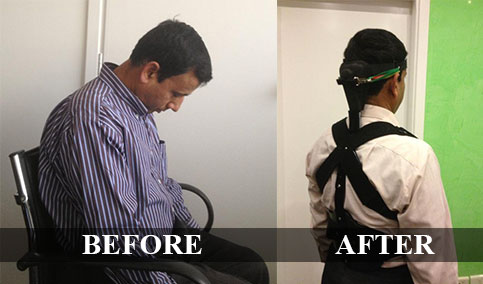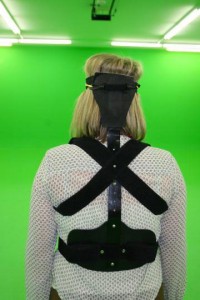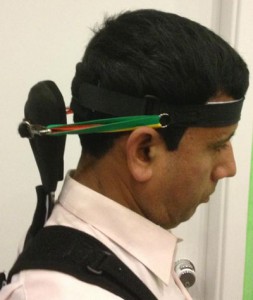The DCO is the most advanced system available for the treatment of head drop. This truly dynamic device is the only system available that supports a neutral, midline position, while still allowing normal movement. Through the use of the dynamic resistance bands, the DCO offers a resistance to movement helping to facilitate strengthening of the musculature of the neck, while assisting with re-centering in midline.
Dynamic Cervical Orthosis (DCO)
- Home
-
Dynamic Cervical Orthosis (DCO)

Dynamic Cervical Orthosis (DCO)
Uses of DCO
- To stabilize the head for the patient population that either congenitally, pathologically or traumatically loses the ability to stabilize the head.
- This device is primarily designed for patients with a lack of voluntary control of the head and neck, often secondary to Cerebral Palsy, Multiple Sclerosis, Spinal Muscular Atrophy and severe Hypotonia.
- These patients are not able to consistently control the position of their heads and have a difficult time functioning normally. As a result, this device will help to better position their heads to engage the world around them and improve their function and independence.
- To stabilize the head and neck in a neutral midline position, facilitating improved breathing, swallowing and speech patterns, as well as the ability to engage the environment.
- To offer graded resistance to movement, creating an overall strengthening of the muscles used to control the head and neck.


DCO Characteristics
The Strapping System
- Shoulder Straps: Via a chest strap and figure “8”, the device provide to the patient a shoulder straps that prevents from shoulder enrollment.
- Chest Strap: Provides an attachment point for a circumferential chest strap, which anchors the DC
The Dynamic Cervical Orthosis
- The specific durometer of the elastic bands is determined as part of the fitting and treatment of the user.
- Stabilizes the head in neutral position
- Movement against resistance, allowing for strengthening of the neck muscles
For a Better Head Control
- The upright is easily contoured to match the user’s natural spinal curvature and head shape.
- The occipital support is also lined with a soft foam interface
- The user wears a strap around the head at about the glabella level
- When the user dons the device, the straps are connected around the chest and around the shoulders. The head strap is donned and snugged in place
- Head band is connected to the occipital support via elastic bands
- These elastic bands help to stabilize the head in neutral position.
- Movement of the head is then against resistance, allowing for strengthening of the musculature of the neck, resulting in improved head control

Indications
- Poor Head Control
- Neck Weakness
- Head Drop (Ptosis)
- Parkinson’s Disease
- Multiple Sclerosis
- Myopathy
- Amyotrophic Lateral Sclerosis
- Poor Head Control Due to
- Hypotonic Cerebral Palsy
Contra-indications
- Rigidity of the Neck Musculature
- Fusion of the Cervical Vertebrae
- Fixed Neck Position
In Comparison with Other Orthosis
- The other existing orthosis are considered as head support with both anterior and posterior supports.
- They show no similarity to the function of the DCO They mainly immobilize the head in a static position (lacking functionality) such as Sternal, Occipital, Mandibular Immobilizer (SOMI), or a 4 points cervical orthosis.
- DCO system allows to correct the head position in a dynamic way. This will allow the patient to be able to move his head in all directions (functional).
- DCO system will provide a “Rappel System” bringing the head to a the initial corrected position after each movement.
- DCO system provides a graded elastic assisting aid to the patient. This aid could even be modified according to the patient improvement
Contact us for more information
If you require more details regarding availability and purchase, contact us now!
